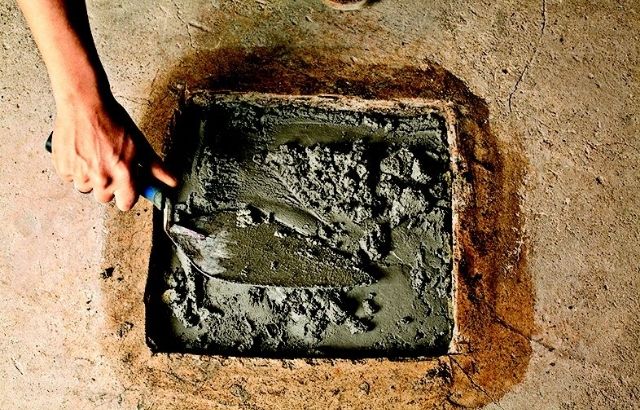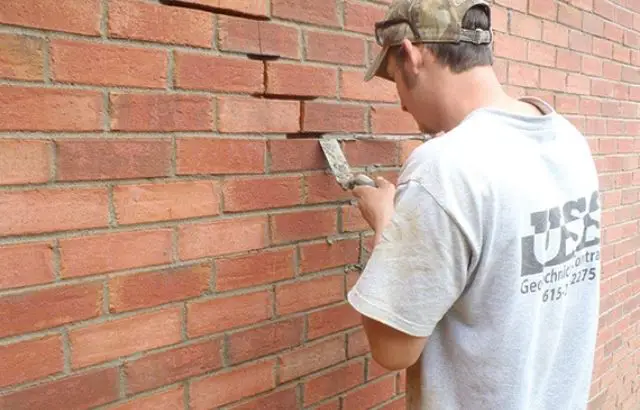If you plan to construct a new house or a building, make it yours and benefit from the chance. Yes, you can create a space that is ideal for your needs. After all, your home is the best place to enjoy with your family, friends, and loved ones; the house you build should be a perfect piece of art where you decide to live for a lifetime. The first step in constructing a home is a strong foundation. Before going to “how to patch a hole in the concrete foundation,” which is the main topic of our discussion today, let us look at the importance of a concrete foundation.
Besides being comfortable, your home should be environmentally friendly to the modern and satisfy the latest standards. In this way, you may contribute positively to the environment and save money as well.
Moreover, the concrete foundation requires protective and remedial systems like patching should be applied to concrete structures to protect them against chemical and mechanical effects. Such remedies are essential to enhance the structural durability and increase the life performance of the materials used in construction. So if you want to give your buildings such type of favors, you should keep in mind the above tips.
Importance of Concrete Foundation
If you don’t want your home to keep long time maintenance issues, the foundation should be strong enough to hold the entire structure.
Yes! I am talking about the concrete foundation. An excellent concrete foundation resists movement, keeps moisture out, and gives isolation against the cold. In the areas where there is a lot of humidity in the ground, concrete foundations must be built in the Pacific Northwest. A good foundation typically needs a poured concrete foundation and concrete walls, all strengthened by steel.
How to Patch a Hole in a Concrete Foundation
If you have a concrete foundation or a slab, call in fixtures like toilets, floor drains, and sink in most remodeling projects. You must know how to patch a substantial foundation hole, if and when required.
If you have recently done the plumbing procedure, some holes in the foundations must be jam-packed before painting a new floor or installing a new floor.
So this task is not difficult and complicated, only with some effort, simple tools, concrete mixture, you can patch a hole in the concrete block wall and repair a large hole in the foundation so that it mixes with a surrounding concrete floor. So for this, follow the steps given below.
Preparation of hole
- Wear the protective glasses and make the holes by destabilizing with a hammer and cold chisel. If you taper the lower part of the edges in an outward direction, it will prevent the cement from rising.
- With a wire brush, remove the chipping fragments and even the uneven edges of concrete. With the help of a wet-dry vacuum, void the rough ends of it.
- Now, install the sand base in the hole and fill drill holes in concrete to about three inches below the foundation’s surface with plaster of Paris. Pack down the sand with your hand and moist it with a moderate amount of water.
Install the concrete
- Apply sufficient concrete bonding agent on the concrete hole’s rough edges with a paintbrush.
- Mix 2 quarters of water with a 40 pounds of concrete mixture in a plastic tub and make a mixture of two with the help of a shovel. Now add a small quantity of water to it to get the medium consistency. Fill a large hole with concrete as required such that the wet concrete slightly rises at the top.
- Pack down the concrete’s wet surface with an edge of the casual piece of 2/4th to press the stones in the mixture under the surface. Place the piece of wood crosswise on the body in a severing motion, from side to side, to get rid of the excess concrete. Dig the extra amount in the plastic tub.
- To give it the finish, put the fresh mixture of concrete with the steel trowel. Now, test the texture of concrete with your fingertip. If it makes the dent, you may know that it is ready for a trowel.
- Instead of straight strokes, make the swirling strokes trowel the concrete surface. Let the concrete mixture set for 30 minutes to give it the finished look and even surface by using the pressure on the trowel and spin strokes.
If the holes are less than ¼ inch:
- To prepare the hole, brawl the hole’s surrounding surface with the putty knife to remove bulging material and uneven edges. Remove the excess amount of dust and debris.
- Now fill up the hole with liquid caulking or shrink free speckling. The material should be enough to patch a hole in the concrete wall and concrete foundation too.
- Even out the material by wiping it with your fingers. Be careful while doing it as it will shape up your next steps.
- With the damp and clean piece of cloth, remove the material’s excess amount from the foundation surface.
If the holes are bigger than ¼ inch:
- Removal of uneven edges or protruding material should be done with the utility knife. Prepare the holes by grinding the surface of the surrounding of the foundation and the floor. Remove the excess amount of dust and debris.
- To fill up the hole and the surrounding area, apply the joint drywall compound with the utility knife.
- Now place a mesh drywall joint tape or a piece of paper on the hole’s surface and clean it with a utility knife. Give the material enough time for drying and sand it with the sandpaper.
- Coat the second layer of joint compound on 3 inches of the surrounding area, smooth it with the utility knife and cover the tape.
- The material should be dried and sand it slightly with sandpaper. Apply a third layer on it to conceal the whole and joint tape if necessary.
- Now coat the proper amount of foundation texture. Allow it to dry and finish the task by painting the repair.
- You can also plug a hole in the foundation with hydraulic cement. This product is offered in powder form and, you can make a mixture with the water before applying. However, some brands provide this product in the putty form that is readymade available for filling. You can use this material in the concrete wall leaks by enlarging the openings by removing the extra amount of loose concrete material. Then apply a required amount of hydraulic cement as referred to on the instruction manual on the foundation floor. Hydraulic cement works well as it takes only 3 minutes to set.
Tip:
The best time for applying hydraulic cement is to do it in the morning when the concrete foundation is cooler so that the cement would not dry very quickly.
Precaution:
When you are working with hydraulic cement, always wear protective glasses and rubber or latex gloves so that your eyes and hands might not get any damage.
Products at Amazon:
- J-B Weld 8281 Professional Size Steel Reinforced Epoxy Twin Pack -10 oz.
- Soto SPACKLE Paint Repair Nail Hole Filler.
- Damtite 04012 Grey Bonds On Vinyl Concrete Patch 12 lb. Pail.
- Bondo All-Purpose Putty, designed for Interior and Exterior Home use
- Rust-Oleum 301012 Wall Surface- Repair- Products.
How to Patch a Hole in a Concrete Foundation: FAQs
What do you use to patch concrete?
The QUIKRETE Vinyl Concrete Patchier or QUIKRETE Patching Compound should be used to patch in concrete.
Remove the extra material like dust, oil or grease, unsound flaking concrete from the damaged area. Now scrub and clean the surface of the repaired area with the stiff bristle brush.
How do you repair a hole in the concrete foundation?
Prepare a mixture of concrete as required, as it takes three minutes to dry. Put the hydraulic cement tightly in the hole with the utility knife or trowel. Now even the surface of the damaged area as soon as possible before the cement sets. Spray enough amount of water many times for the next 24 hours.
How do you attach concrete to old concrete?
Drill holes of 5/8 inch diameter holes and 6 inches deep into old concrete.Even the holes with water, and inject Epoxy into the back of the hole.
Now insert the 12-inch length of rebar into the holes. To ensure the even coating of Epoxy all around the surfaces, twist them to patch a concrete in old concrete.
Conclusion
To conclude the topic of how to patch a hole in the concrete foundation, I would say that patching holes are a necessary part of keeping your concrete foundation in good repair. If you want to provide your floor a smooth and finished look, you should do it immediately and quickly. Ideal and appropriate patching is useful for both purposes. Hydraulic cement is the best option to fill cracks and holes as it dries.
Read More: How to Match Hardwood Floor




